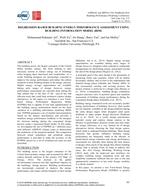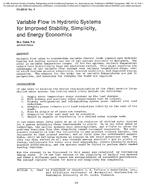The current bio-physical theories of indoor comfort and satisfaction with indoor environmental quality (IEQ), such as thermal and visual comfortadopt an environmentally deterministic perspective that only stresses the importance of the physical environment in the design of an indoor space. Thisperspective defines indoor environmental quality in terms of separate components, such as visual and thermal comfort that are independent andseparate in their effects on the occupant’s overall perception of spatial experience. Accordingly, the design of high performance buildings rely on thisperspective to engage various consultants in an integrated design practice that aims to achieve a quality environment for the occupants and the planet.By adopting this limited perspective while relying on tools and metric that predict user experiences with limited accuracy, we are stretching the gapbetween performance prediction and actual performance of buildings. In real settings, especially those designed with green and sustainable objectives,the occupant reacts to the overall ambiance of the environment resulting from the direct as well as the interactional effect of these components in asystemic perspective that is rarely discussed or conceived in the building design process. This paper proposes a systemic approach to conceptualize IEQin the design as well as the post-occupancy phases of a project. By applying a holistic understanding, the resulting ambience of green buildings isperceived in terms of five sub-systems; thermal, visual, indoor air quality, acoustical, and spatial comfort. To validate this model, various spatialconfigurations and IEQ design strategies were assessed and measured for a recently completed high-performance building. Evaluations included acomparative analysis of various deign processes, design and simulation tools used, as well as 24 months of post-occupancy field assessments to testsuccesses and failures of the design process. Early interviews and focus groups with the building occupants’ revealed that neither acoustical comfort norindoor air quality issues are applicable to investigate for this building due to the cellular configuration of the building spaces and thus were not included inthe study. Issues related to thermal and visual comfort were of concern. As occupants’ indicated various degrees of comfort and discomfort with manyspaces within the building. Spatial analysis and visualization of IEQ assessments relating to visual and thermal comfort both from the qualitativephenomenological and quantitative performative impacts of the studied spaces on both the place and the people is presented. Its implications on thefuture design and research of indoor environmental quality and ambience of sustainable buildings is discussed. The hope is to provide a decisionsupport process and lessons for building practitioners, occupants, building owners that would help them prioritize and evaluate green design and IEQstrategies in a comprehensive way, combining this perspective would ensure that we built spaces that are both energy and people conscious.
Citation: ASHRAE and AIVC IAQ 2016 Conf
Product Details
- Published:
- 2016
- Number of Pages:
- 10
- Units of Measure:
- Dual
- File Size:
- 1 file , 1.7 MB
- Product Code(s):
- D-2016IAQ-18


